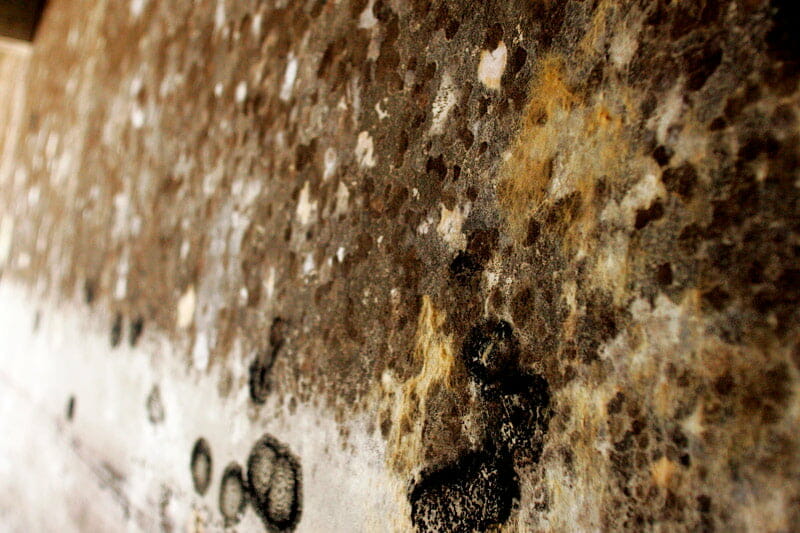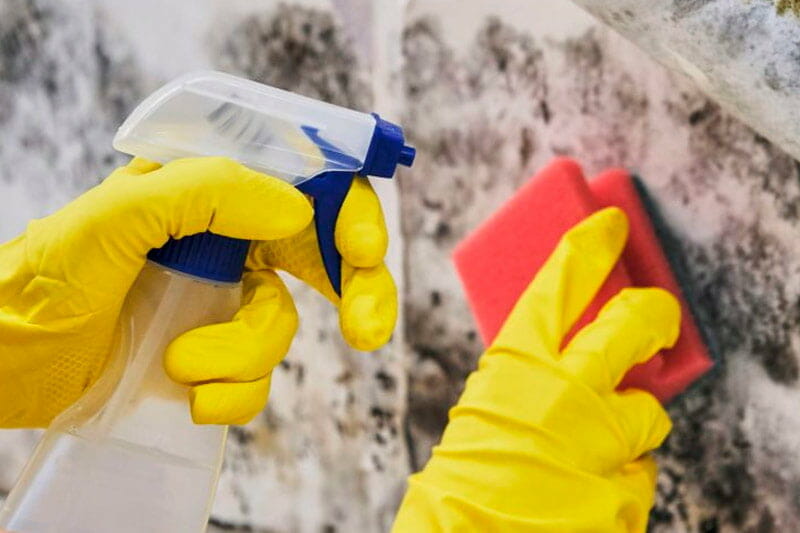Mold spores are oftentimes found in the air around us. Nevertheless, being exposed for long periods to elevated levels of these spores may trigger respiratory problems and allergic responses.
Mold spores travel in the air indefinitely because of their tiny and lightweight. So mold in your basement or attic can easily float through the air and affect different parts of your home.
Different types of mold travel easier than others, but all should be cleaned before they disperse spores.
How Far Mold Spores Travel in the Air
Mold spores are the main means for the reproduction and spread of mold. They are tiny and lightweight, meaning they can spread far and wide in the air, provided the environment is conducive. A conducive environment for the spread of mold spores is moist or damp, has surfaces where they can attach themselves, and adequate nutrients to feed on.
Can Mold Spores Travel From Room to Room?
Mold spores can travel from room to room around the house in 24 to 48 hours. How? Because the spores are microscopic, they can quickly move and affect different areas of the home by natural air currents every time you walk, vacuum the carpet, or even sit on the couch.
Can Mold Spores Travel From House to House?

Yes. Mold spores can move from one house to another. If you have mold in your home and are moving to another home, you can easily cross-contaminate the new environment unknowingly because it is hard to tell which furniture the mold spores were attached to.
Before moving to a new house, ensure you thoroughly clean the appliances, clothes, and furniture you are moving with to avoid contaminating the new home.
How Do Mold Spores Travel in Air?
As aforesaid, mold spores are very tiny and lightweight. Their size ranges between three and 30 microns, half the estimated width for a hair strand.
Their characteristic nature enables the spores to float in the air undetected until they are disturbed and settle on a surface.
Mold spores can enter a home through open doors, windows, HVAC systems, or roofs and attach themselves to furniture, shoes, walls, appliances, floors, or even the carpet and begin to multiply. Because these surfaces often provide food for the mold to grow.
Mold can settle on a person’s skin, shopping bag, clothing, or shoes outside the house, bringing mold spores into the home.
Where Do Mold Spores Attach Themselves?
Mold can only grow in a dump and fiber-rich surfaces, such as walls, wood, or fabric. As the mold spores drift through the air and eventually settle on such surfaces, the mold spores will generate hyphae with the right combination of temperature, oxygen, and moisture.
Hyphae are thread-like cells that absorb the nutrients that facilitate the growth of mold.
The mold spores colonize in one to 12 days and grow at the rate of one square inch a day. Thus, they can cover several square inches in less than a week.
If mold spores attach themselves to a place that’s not ideal for their growth, they will die between 24 to 48 hours. Don’t celebrate yet, because dead mold spores are also unhealthy and can cause health problems, like allergies.

How Long Do Mold Spores Stay In the Air?
Mold spores can stay in the air for an unlimited amount of time before they find somewhere to attach themselves. So, for example, if there is a damp spot anywhere nearby, mold spores are likely to congregate in that spot and from one mold.
However, this doesn’t mean that the mold spores will be removed entirely from the air since new ones will be formed.
Having a high concentration of mold spores in an enclosed room such as a home is quite dangerous to a person. It is therefore indispensable to stop the spread of mold spores.
How To Stop the Spread of Mold Spores
Mold spores are not harmful to one’s health but having a high concentration of mold spores is very destructive to your health. Completely getting rid of mold spores is nearly impossible, but you can minimize the number of spores in your home by:
Getting Rid of Mold
There are multiple ways of getting rid of mold and its spores yourself. Below are some of the most effective ways.
Scrub off the mold-infested areas
In a spray bottle, you can mix hydrogen peroxide with water, shake it well and then spray on the areas with mold. Let the mixture sit on the mold-infected regions for about 10 minutes. Then using a scrub brush, scrub off the mold.
Eliminate moisture
Maintain low humidity about 30% to 50% all the time slows down the growth of mold. In cold weather, keep the house warm since the air is less able to hold moisture as the temperature reduces, and it may condense on the cold surfaces making it a haven for the growth of mold.
Use dehumidifiers and air conditioners, especially during hot or humid seasons, to reduce moisture levels in the air.
Finally, avoid having dump clothes in the house because they increase the moisture levels.
Open your doors and windows
Opening your windows and doors allows the house to have constant air circulation, making it almost impossible for the mold spores to camp in a particular place for long. You could also use fans to increase air circulation.
Dry wet areas and fix any leakages
Check for leaks that would be causing excess flooding increasing moisture, and fix the issue. Mold tends to thrive in places that have high humidity or moisture. Consequently, do not allow any space to remain wet for more than 24 hours.

Get a Professional
Handling molds can be difficult and dangerous, and it’s always best to leave it to the experts. If you have no idea where to find an experienced mold expert, don’t worry because Home Garden Guides can help you find up to 3 mold experts in just two minutes. How?
- Scroll to the top of the page and enter your Zip code.
- Answer questions about your mold job
- Your mold removal details are forwarded to three local experts. They will send you a price estimate for the job and some friendly advice.
What’s the best thing about working with us? There is no obligation to hire. This is a free tool and service to be used at your pleasure.







